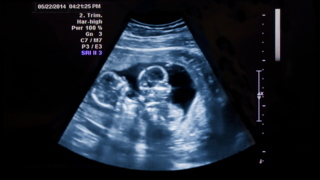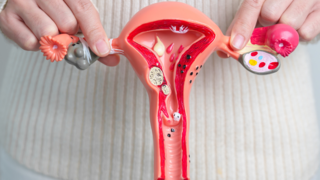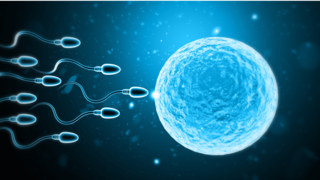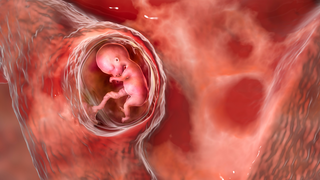What Is Twin-to-Twin Transfusion Syndrome (TTTS)?
TTTS is a rare complication that happens only in identical twin pregnancies. These twins usually share one placenta but have separate amniotic sacs. These twins are called monochorionic diamniotic twins. Tiny blood vessels connect their blood supplies. If the blood supply between the twins is not shared evenly, TTTS can develop.In this article:
What are the symptoms of TTTS?
TTTS may not always have prominent symptoms. However, in some cases, the following symptoms may be seen:- Rapidly growing abdomen
- Tightness or discomfort due to excess amniotic fluid
- Sudden weight gain or a feeling of pressure
How is the Diagnosis of TTTS done?
Doctors diagnose TTTS using ultrasound and Doppler scans. These tests are used to check fluid levels, bladder filling, and blood flow in each baby.How is Twin-to-Twin Transfusion Syndrome (TTTS) Treated?
The treatment for TTTS depends on how far along you are in your pregnancy and how severe the condition is. The goal of the treatment is to balance blood flow between both babies and improve their chances of survival.The various treatments for Twin-to-Twin Transfusion Syndrome (TTTS) include the following:
- Close Monitoring: If TTTS is mild or in its early stages, your doctor may recommend frequent monitoring. This includes:
- Regular ultrasounds to check fluid levels and blood flow.
- Specialist scans to track each baby’s growth. This approach allows your medical team to detect any changes early and decide when or if further treatment is needed.
Amnioreduction
Amnioreduction is done when the recipient twin has too much amniotic fluid. This process involves removing some of the extra fluid from the uterus using a fine needle. The amnioreduction procedure helps relieve pressure on the uterus, reduces discomfort, and lowers the risk of preterm labour.However, amnioreduction does not fix the underlying problem, which is the blood flow imbalance. It may need to be repeated. This procedure is mainly used to manage symptoms or stabilise the pregnancy until a more definitive treatment is possible.
Septostomy
A septostomy is a procedure in which a small hole is created between the twins’ amniotic sacs. This hole allows amniotic fluid to flow from the sac with more fluid to the sac with less, helping to balance fluid levels. By equalising the pressure, it can reduce the strain on the recipient twin and the uterus.Septostomy is less common than other treatments for TTTS. It is usually considered only when laser surgery cannot be performed or is not suitable. While the septostomy procedure helps manage fluid imbalance, it does not correct the underlying blood flow problem between the twins.
Fetoscopic Laser Surgery
Fetoscopic laser ablation is the most effective treatment for moderate to severe TTTS (Stage II and above). It is a minimally invasive procedure. During a Fetoscopic laser ablation, a small camera (fetoscope) is inserted into the uterus. A laser is then used to seal off the shared blood vessels that are causing the imbalance.Benefits:
- Treats the cause of TTTS by stopping uneven blood flow.
- Improves the chances of survival for one or both twins.
- Reduces strain on the recipient twin’s heart and allows the donor twin to grow better.
- A Fetoscopic laser ablation is performed by a specialist foetal medicine team. Once the procedure is done, it is followed by close monitoring with follow-up scans.
Selective Cord Occlusion
If one twin’s condition is putting the other’s life at risk and other treatments aren’t possible, doctors may consider selective cord occlusion.This procedure stops the flow of blood to the more severely affected twin. As a result, the other twin is protected from harm. Selective cord occlusion is only done in very serious cases and after thorough discussion with the medical team.
Early Delivery
In some cases, if both babies are developed enough to survive outside the womb, then the doctor may recommend early delivery. This treatment option is usually considered when TTTS progresses despite treatment or when the pregnancy is far enough along. After delivery, the babies will likely need care in a neonatal intensive care unit (NICU) to support their growth and development.Twin-to-Twin Transfusion Syndrome (TTTS) is a rare but serious complication seen in identical twin pregnancies. While its diagnosis can be scary, with timely detection, close monitoring, and expert treatment, the pregnancy outcomes can be significantly improved.
Whether you’re pregnant, a new mom, or navigating postpartum, you don’t have to do it alone. Join our support group to connect, share, and support one another.
FAQs on How TTTS Affects Pregnancy and the Treatment Options Available
- Is Twin-to-Twin Transfusion Syndrome (TTTS) preventable?
No, Twin-to-Twin Transfusion Syndrome (TTTS) cannot be prevented. However, with regular monitoring, it can be detected in its early stages. - Does Twin-to-Twin Transfusion Syndrome (TTTS) affect the mother’s health?
While TTTS majorly affects the babies, the mother may also feel discomfort due to excessive amniotic fluid. - Are there any risks associated with Fetoscopic Laser Surgery for TTTS?
Yes, like any procedure, a Fetoscopic Laser Surgery for TTTS also has certain risks. These risks include membrane complications, preterm labour and even loss of one or both twins.











